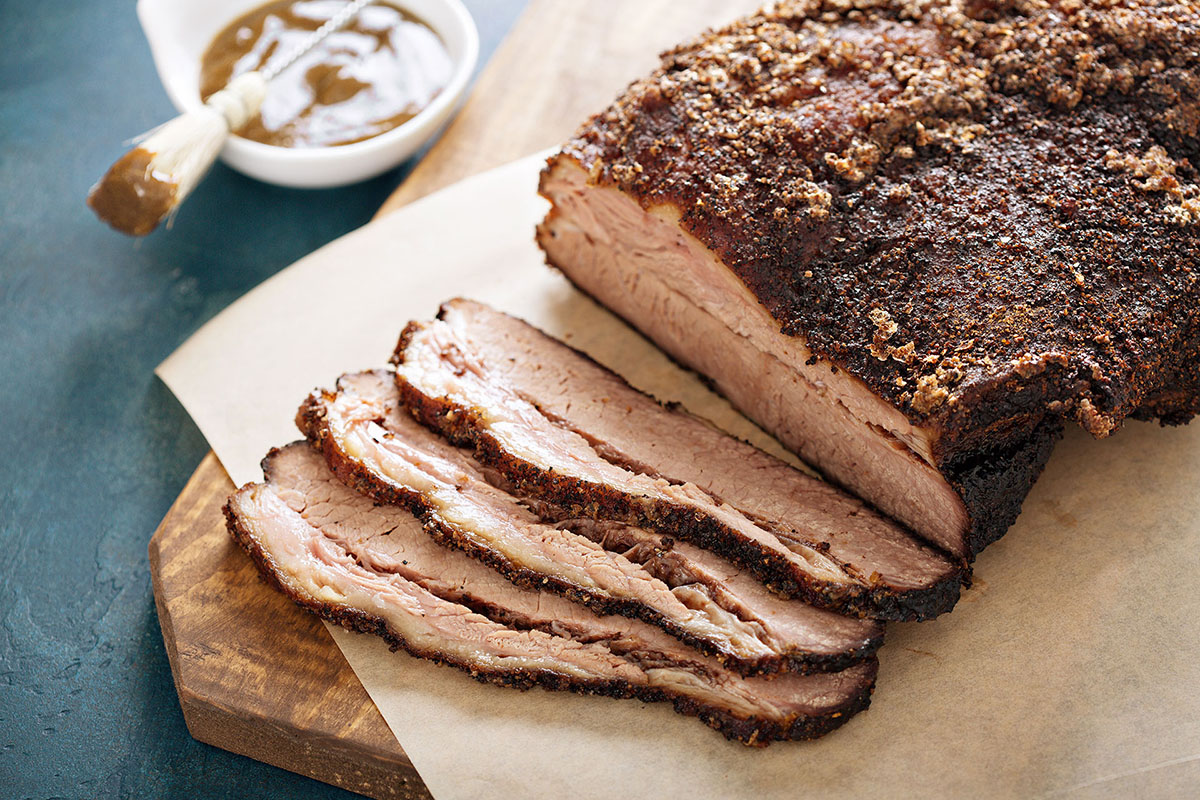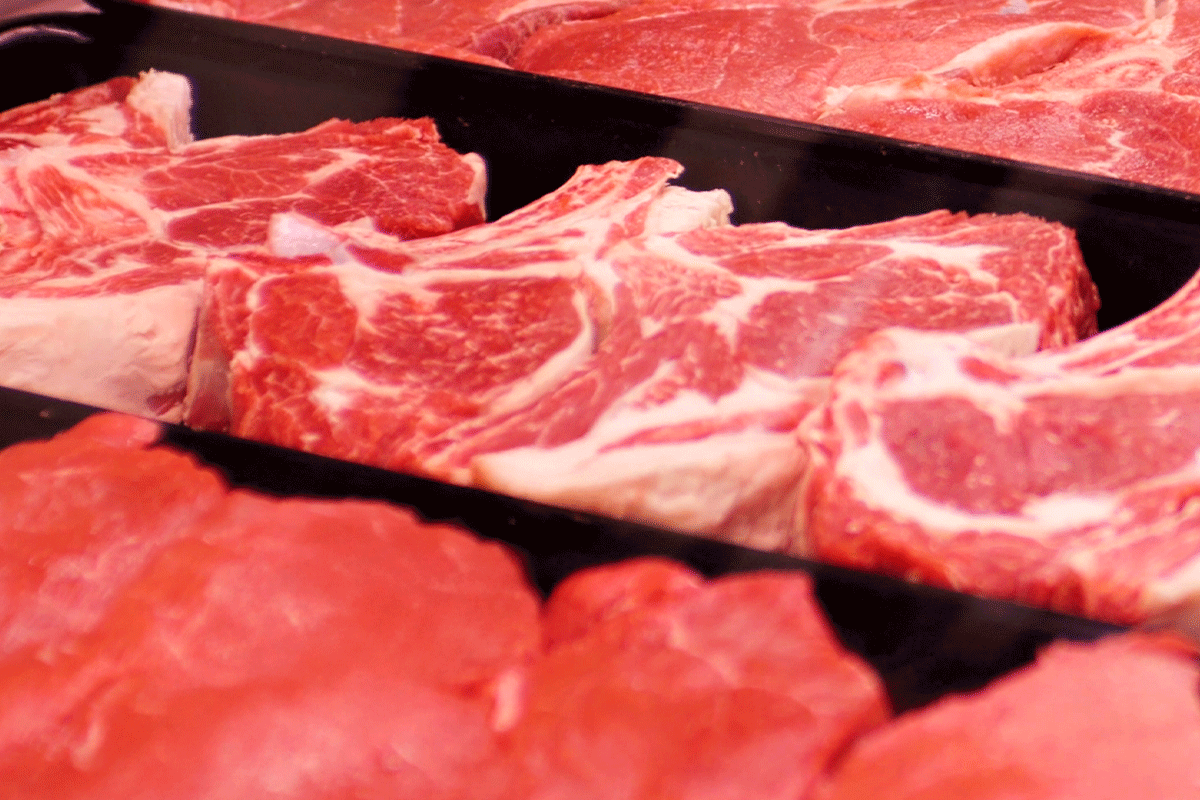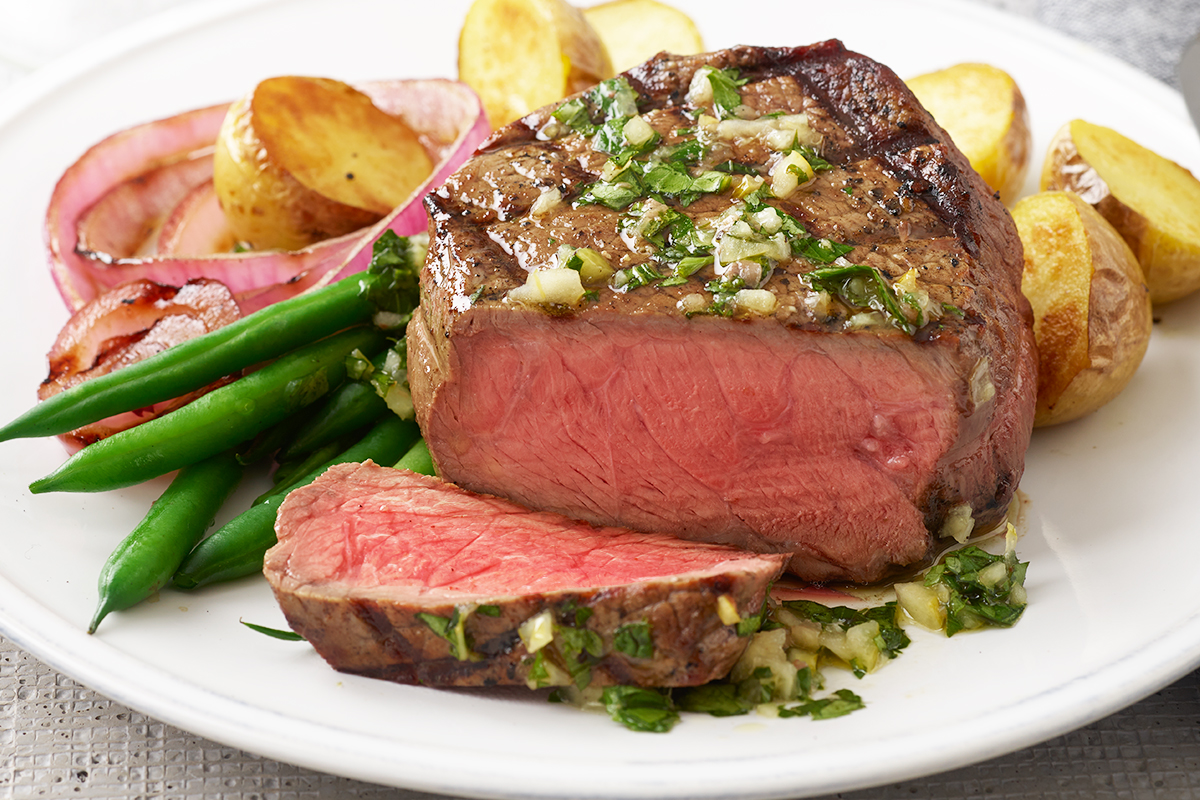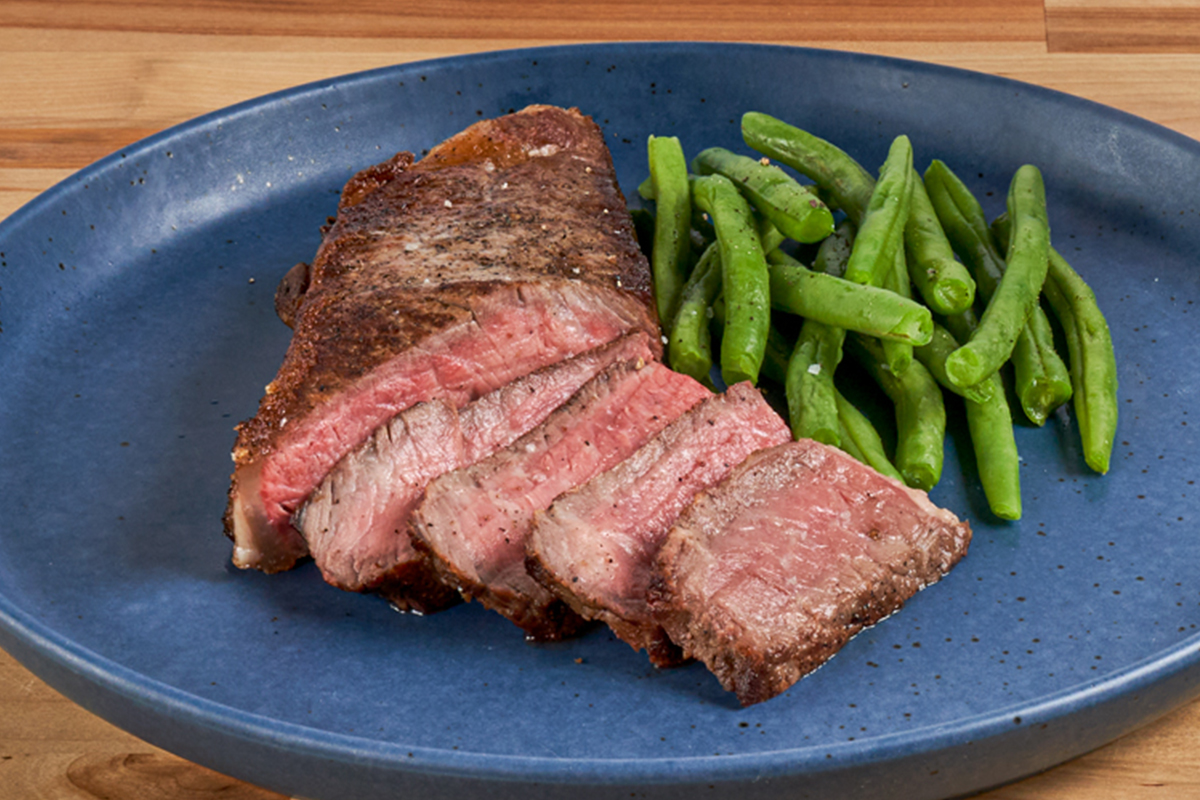
How to Smoke Beef Brisket Like a Pit Boss
07.09.2024
From Texas to the coasts, beef brisket is a cut that inspires awe and respect. And a cook who masters smoking a beef brisket holds the power to have all the neighbors knocking down the fence for a seat at the next barbecue. You can be that master pit boss with this guide in hand.
Read on to learn what brisket is, how to smoke and slice it, and what to serve alongside the prized cut. We share ideas for using leftovers too.
First things first, what is a beef brisket?
Beef brisket is a large, flat cut of meat from the animal’s breast area (this area of the animal is known as the brisket primal). Often, a beef brisket is split into two smaller pieces, with the “first cut” being the brisket flat half. This piece is leaner but brings big, beefy flavor. The other side of the brisket is the brisket point half, a super juicy, heavily marbled cut.
Smoking is the classic way to prepare brisket, with origins in Texas dating back to the early 20th century. Brisket has come a long way since those early days, and now the words, “Texas,” “barbecue,” and “smoked brisket” are practically synonymous.
Why are beef briskets good for smoking?
Because of its location, the brisket primal is frequently used for movement. This extra movement gives brisket tougher connective tissue than cuts from lesser used primals. Tenderer cuts from lesser used primals include the filet mignon steak (loin primal) and the ribeye steak (rib primal).
But, when using the right slow cooking techniques like smoking, the natural fibers of the brisket break down to create incredibly juicy, tender, and flavorful bites of beef. This is why brisket is beloved by backyard barbecuers and is among the most popular beef cuts used in barbecue restaurants across the United States.
How do I smoke a beef brisket?
Our step-by-step instructions for smoking a beef brisket come from chef Sarah Faherty. Prep time is short—just 15 minutes—but your brisket will need thirteen hours of cooking (or more). It’s a time-consuming process, but once you taste the result, you’ll see it as a worthwhile labor of love.
Step 1: Prep Your Brisket
- Trim the fat cap on your brisket to ¼ inch or ½ inch at the most. You want to maintain the flavor and juiciness that comes from fat, but leaving too much can create a mushy, slimy eating experience and ruin the bark that forms naturally on the outside of the brisket.
- Next, season your brisket with a dry blend of spices and let it rest at room temperature for an hour.* Sarah uses garlic powder, onion powder, smoked paprika, and coriander. Our Ambassador @the_salted_bite uses mustard, pepper, and an espresso-based spice blend. It’s up to you and your personal taste.
- Pro tip: If you have extra time, try resting your brisket in a dry brine for twelve hours before adding the secondary seasoning and smoking. As we talked about in our Meet the Tomahawk Steak article, dry brining is the process of rubbing a piece of meat liberally with salt and a little pepper. As the beef sits in its salty crust, the meat’s juices are drawn to the surface and dissolve the salt. Finally, the savory liquid is reabsorbed into the meat, restoring the beef’s natural juiciness and infusing extra flavor.
*A note on food safety: the USDA advises consumers to never leave food out of refrigeration for more than 2 hours. If the outside temperature is above 90°F, food should not be left out for more than 1 hour.
Step 2: Smoking Your Brisket
- Next, it’s time to prep the smoker. Sarah recommends using applewood in your smoker, but there are a variety of options, such as hickory, mesquite, oak, and even maple, each with their own flavor profile. Whatever wood you choose, it’s time to get your smoker fired up and preheated to 225°F.
- Put your brisket in the smoker over indirect heat, with the thicker side closer to the heat source. Smoke it until it reaches an internal temperature of 165°F, as measured with a meat thermometer.
- At 165°F, remove the brisket from the smoker and wrap it, edge over edge, with butcher paper (like you’d wrap a present). Place it back on the smoker until the internal temperature reaches 200–205°F. Please note, this can take up to five hours. As Sarah notes, there’s always a stall time between 150–170 degrees when smoking a brisket. Patience is key!
Step 3: Take a Break
- You’ve put in the effort—now it’s time to relax. Every brisket expert, including Chef Sarah, says you need to rest the smoked brisket in its paper for at least an hour before serving. Tempting as it may be, don’t peek, okay? Just throw on an episode of your favorite Netflix show and take a breather.
- At the one-hour mark, unwrap your brisket, slice it against the grain, and dig in.
Step 4: Shop for Your Brisket
Now that you know how to prepare a brisket, let’s tackle getting your supplies. When browsing the meat case or talking to your favorite butcher, look for brisket with tons of marbling. That will often mean you end up with a USDA Prime or Upper 2/3 Choice beef brisket. (Yep, 1855 Black Angus Beef offers briskets just like that.)
Are you more of a visual learner? Check out this helpful video from Chef Jimmy Papadopoulos. His approach is very similar to Sarah’s and shows you just how to slice your cooked brisket against the grain.
Temperature Chart for Smoked Beef Brisket
Luckily, there’s no temperature chart to memorize for brisket. There’s just one number to remember. That’s because, unlike other cuts of beef like steak, brisket is almost never served rare.
The ideal internal temperature for brisket is at or just above 200°F, which means the beef will always be fully cooked through. Brisket should never have that red appearance that would be seen on a medium rare or rare New York strip, for example.
How much brisket should I make per person?
This all depends on how hungry you and your guests are, but a “typical” diner will be satisfied with three quarters of a pound of brisket. We’re beef obsessives at 1855 Black Angus Beef, and we know how well brisket works as leftovers … so, you might as well round that up (like, a lot). Let’s say up to two pounds per person.
What should I serve with beef brisket?
When first serving your brisket, we suggest pairing it with garlicky green beans or baked beans, roasted potatoes, and an avocado-corn salad.
Got leftovers? First, let us give you major props for being able to hold off long enough to have leftovers in the first place. Second, try @bentley.bbq’s brisket sandwich topped with pepper jack, sriracha mayo, lettuce, tomato, and two layers of brisket.
View this post on Instagram
Another option is to give our beef brisket stew with homemade cheddar jalapeño biscuits recipe a try.
Thanks for coming to our smoked brisket master class. We hope you’re locked and loaded with everything you need to smoke, slice, and serve tender, juicy beef brisket.
Hungry for more? Get our guide to grilling, smoking, and campfire cooking cuts like brisket, chuck roast, and ribs.


